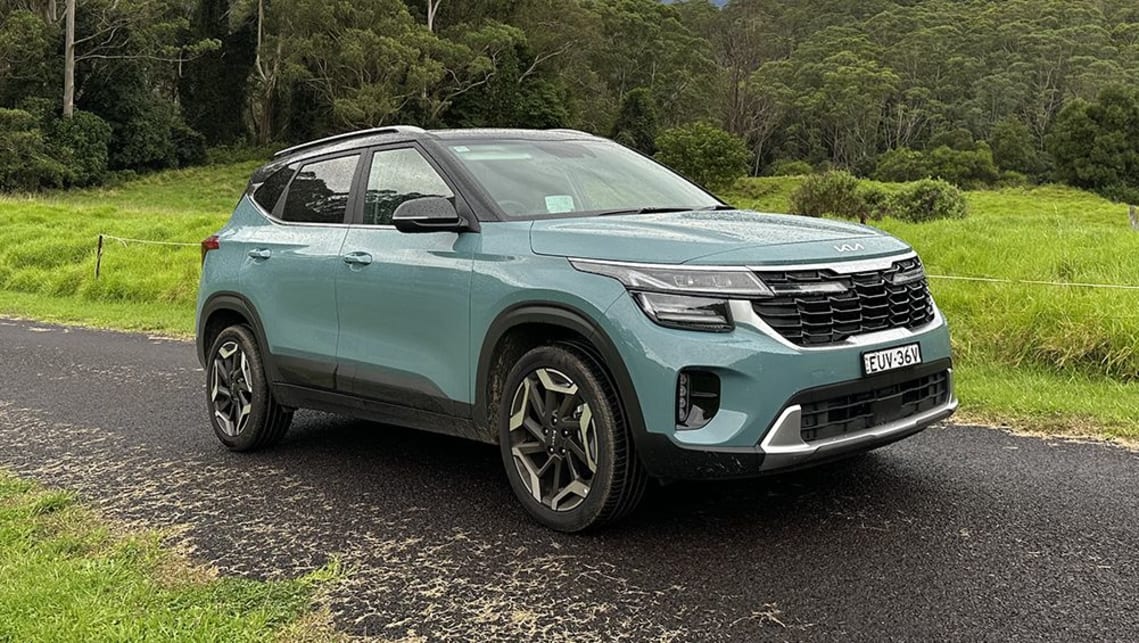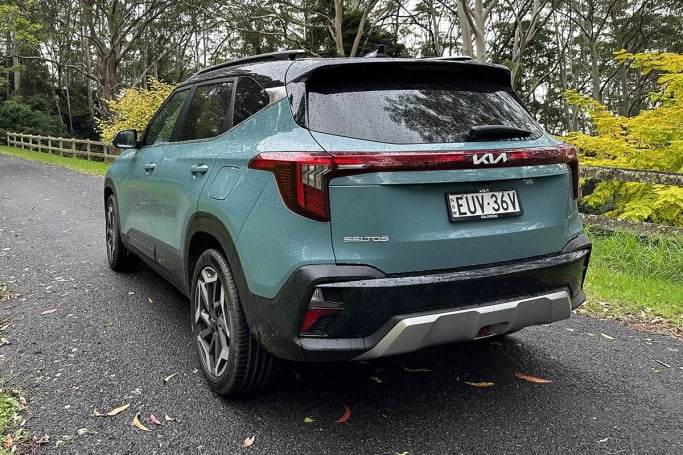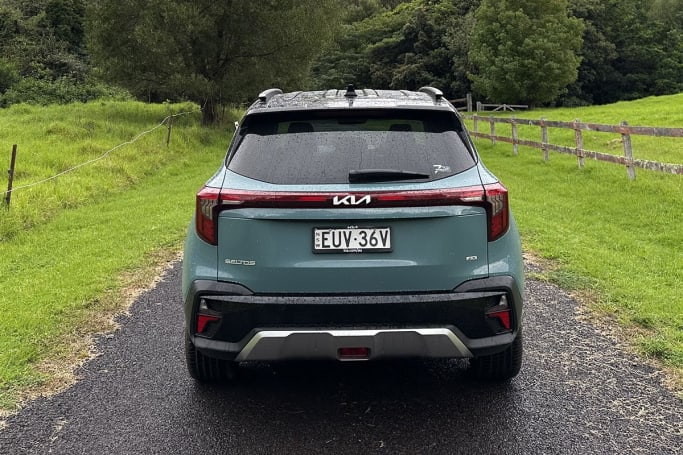
Mazda CX-30 2023 review: G25 Astina
Mazda's CX-30 was impressive when it launched, but in a crowded small SUV space, is it still a stand-out?
Browse over 9,000 car reviews

Full disclosure — the Kia Seltos has long been a favourite of mine. I was at its launch in Seoul when it first burst onto the scene back in 2019, and it’s combination of size, practicality and clever tech ensured it stood clear from its mainstream small SUV competitors.
But that was way back, and much has changed in the new-car world in the years since. Cheaper Chinese rivals have arrived en masse, for example, and almost everyone else has launched new or updated models into the urban SUV space.
So, does the new 2023 Kia Seltos still stand up as a solid choice in the segment? We’re spending three months behind the wheel of the most expensive version of Kia’s popular SUV, the top-spec GT-Line, to find out.
With drive-away prices that climb from $44,590 for the front-wheel drive variant, to $47,690 for the AWD version (calculated in NSW), the GT-Line sits at the top of the Seltos tree, above the Sport+, Sport and S versions.
The cheapest Seltos is $31,690 drive-away, meaning its a sizeable gap between the entry-level and full-fruit versions.
It's also more expensive than the pre-facelift model across the board. Our AWD GT-Line, for example, has gone up by around $2200.
To be fair to Kia, you do get plenty of stuff for your investment, and I can’t see you needing to trouble an options list to get the car you want.
For a start, the GT-Line AWD gets the most advanced (but also the least fuel-efficient) engine option, with a 1.6-litre turbo-petrol (146kW/265Nm) replacing the 2.0-litre naturally aspirated petrol (110kW/180Nm) engine found in the lesser models.

The more powerful engine also pairs with a proper automatic, rather than the CVT fitted to the 2.0-litre cars.
Outside, there are fancy 18-inch alloy wheels (with a full-size alloy spare), as well as LED lighting, a sunroof, an auto-opening boot and all the best design flourishes (a gloss-black grille, roof spoilers, etc).
Inside, there are heated and ventilated front seats, a heated steering wheel, climate control with rear vents and a wireless charge pad that links with wireless Apple CarPlay and Android Auto.
So, you get a lot of stuff, but you also get a lot of space. Small SUVs don’t feel all that small anymore, and the same is true of the Kia Seltos.
This time it measures some 1.8m in width, just over 1.6m in height, and just under 4.4m in length.

That makes it about as wide, and about as tall, as the Kia Sportage, which is the next size up, though it is a fair-bit shorter, with the Sportage stretching 4660mm in length.
To put that into perspective, you’ll find 433 litres of luggage space with the rear seats in place (and that includes the full-size spare), or 1393 litres with the rear seats folded flat.
The result is a car that doesn’t feel tight from any seat. Sure, it’s a squeeze to go five-up, but four adults can ride in comfort here without much in the way of complaint.
The tech is all largely on point, too. Clear, easy to use and largely intuitive, I’ve got no major complaints over the first four weeks behind the wheel.
I especially love the head-up display and the wireless charging pad that acts as a cubby hole that keeps your phone safe and free of slipping and sliding when you’re on the road.

If only all the safety tech was as easy to live with... Full credit to Kia for painting the Seltos with a broad safety brush, with plenty of active and passive tech, but I’d be lying if I said there wasn’t one particular feature I’d like to pull the plug on.
The Seltos is equipped with a speed-sign recognition (admirable), and it alerts you with a incessant chiming should you exceed the limit (also admirable).
The problem is, the system isn’t time based, so should you pass through a school zone at 03:00am on a Sunday morning, for example, the chimes will begin.
Pass a long-abandoned road works zone? Same thing. Or if, as is inevitably the case with all of these systems, it simply gets a road wrong, queue the chimes.
You can switch it off, but you have to do so Every. Time. You. Start. The. Car.

Yep, it defaults back to switched on every time you start the engine. To turn it off, you need to play with the central screen, or take a short cut through the steering wheel controls to activate the safety screen, and then switch it off from there.
I’m all aboard the safety train, don’t get me wrong. But it has to be accurate to be effective, and I can almost guarantee everybody will be searching for the ‘off’ button, essentially rendering it useless.
Another quirk? Fuel use. I don’t know if it’s because I just climbed out of an all-electric long-termer, and so pulling up to any service station is now annoying, but I seem to be visiting them a lot in the Seltos.
Brim the 50-litre tank, and the displayed range is around 500km, which in and of itself doesn’t make much sense.
Kia reckons the Seltos should deliver 7.4L/100km on the combined cycle, which should be more like 675km displayed. But I haven’t yet seen the fuel use drop below 10 litres, although, granted, that’s mostly been in a city environment.
Let’s see how we go when we venture further afield, shall we? But for that, you’ll need to tune in to our next report.
Acquired: April
Distance travelled this month: 277km
Odometer: 2293km
Average energy consumption this month: 13.9L/100km
$33,918 - $48,990
Based on 81 car listings in the last 6 months
$33,918 - $48,990
Based on 81 car listings in the last 6 months